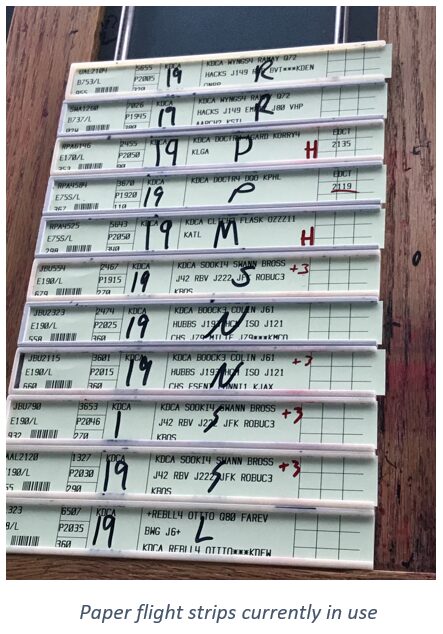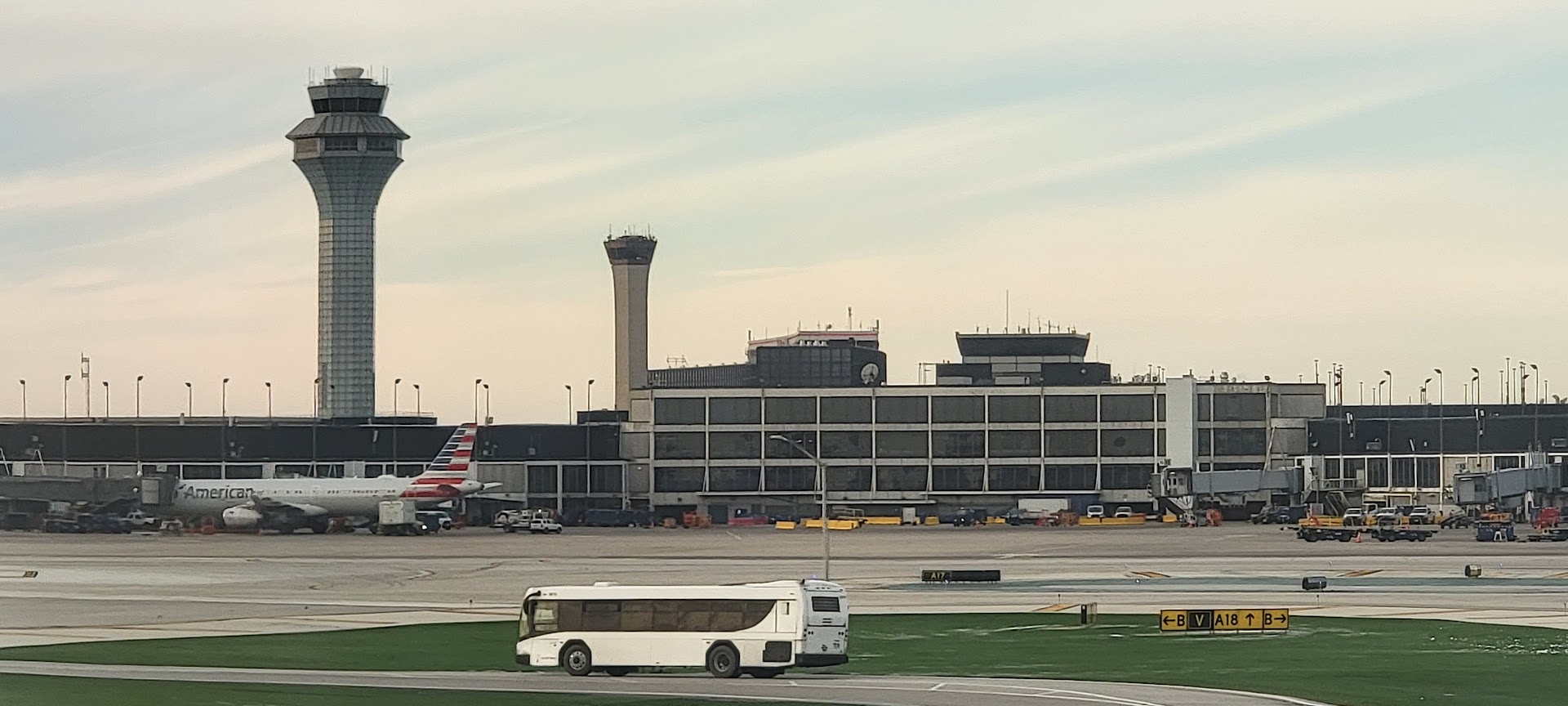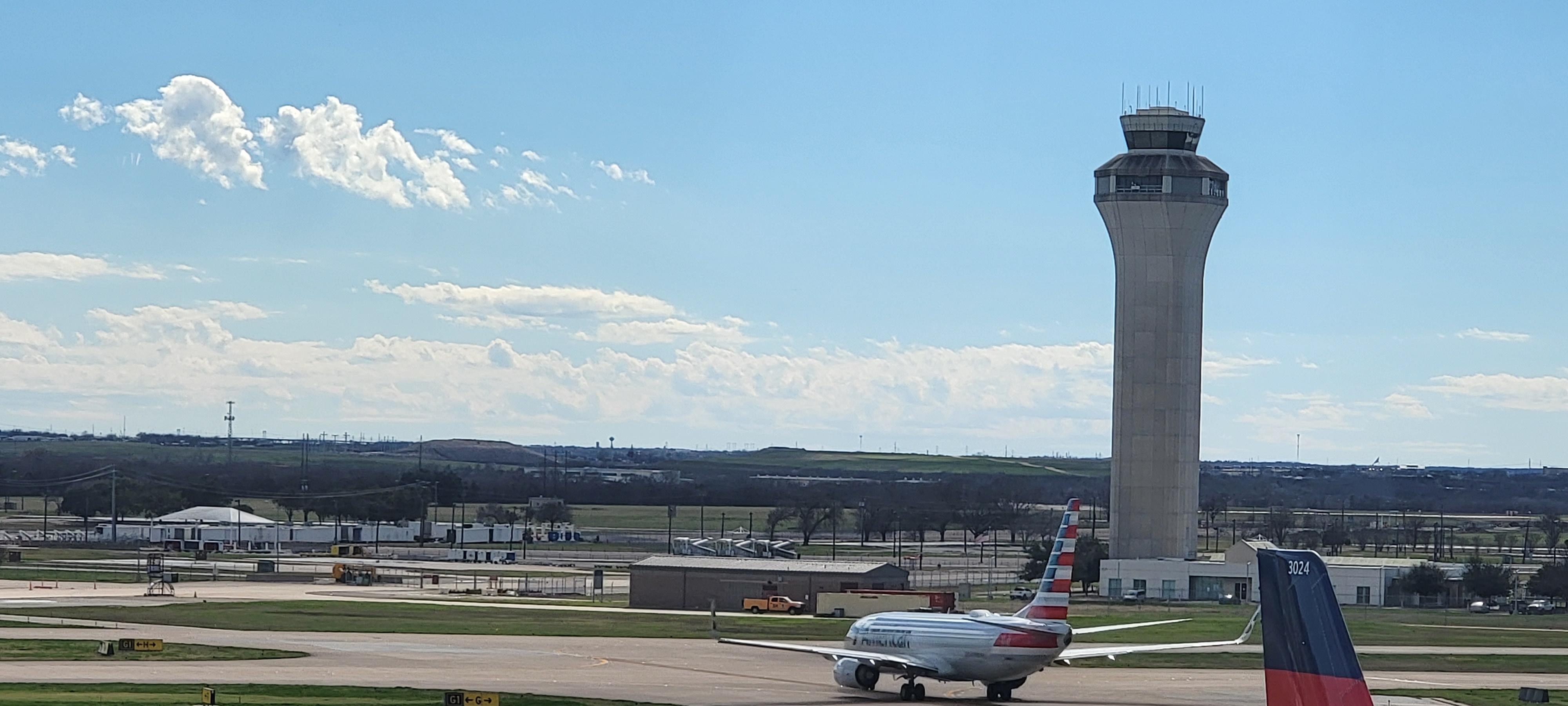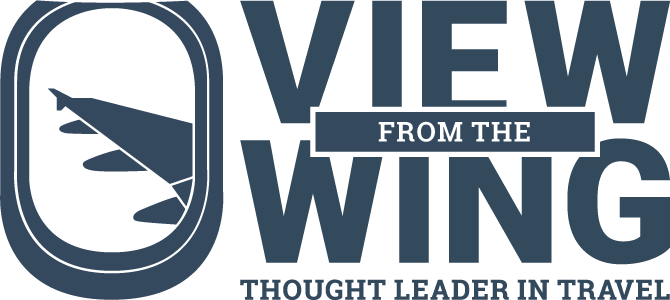It’s crazy that there’s been a national conversation around air traffic control staffing levels, and very little questioning of our air traffic control model. There hasn’t been enough talking around how the agency is managed or how it acquires technology. In many cases we’re still using 50 year old tech, but that raises an even larger question: why is it that airlines give up control of their aircraft to the government from the moment it pushes back to the moment it arrives at its destination?

We’ve Talked About Reforming The Structure Of Air Traffic Control For Decades And Done Nothing
The first Trump administration tried to reform air traffic control, along the lines of Canada’s non-profit model. The FAA would remain the regulator, but wouldn’t also be the service provider, which creates a conflict of interest and lack of accountability. They shouldn’t be supervising themselves!
Instead, a stakeholder nonprofit charges airlines (instead of taxpayers!) for their service. They issue bonds when they need to invest in technology, rather than relying on congressional appropriations. That’s one reason why they’re two to three decades ahead of the U.S. Of course, we could just license the same software as many other nations have done, but the FAA’s culture takes every wish list into account and puts the most cumbersome specs out to bid, the stuff often doesn’t work or takes decades to roll out – piece by piece.
President Bush (43) favored air traffic control privatization, but Congress explicitly banned the idea in its 2003 FAA Reauthorization.

But Shouldn’t We Move Away From Government As Central Planner In The Skies?
We couldn’t get real reforms done over the last 20 years, so I’m going to really be tilting at windmills for a moment by suggesting we should be thinking about a fundamentally different model of the future – where airlines and pilots decide how planes fly instead of controlling this centrally. Technology has allowed this for 30 years, yet instead we tinker with the current one.
- Politics will prevent this
- Current airlines will fight it – they won’t want to change their systems, they won’t want to make their own new technology investments, and they won’t want to invest in greater pilot training and responsibility
In 2004 I wrote that we didn’t have enough air traffic control capacity. Here we are, more than 20 years later! At the time I proposed something radical:
Allowing planes and pilots to operate in the skies much like cars, with technology and communications that allow them to direct themselves while coordinating with each other (as a replacement for the current command and control model) offers some of the best hope for increasing the total capacity of the skies for air travel.
We had the tech to do this in the 90s. With the advances we’ve achieved since then it would be a cinch. I’m not suggesting we just tell airlines to start flying wherever they wish – pushing a button and everything changes. There would need to be real work on procedures and resolving conflicts and on technology, and which planes and pilots became certified to do this.

How A Decentralized Air Traffic Control Would Work
Airlines and pilots controlling their own flight operations, selecting the most efficient routes, altitudes, and schedules would work very differently than the current model where air traffic control dictates aircraft routing and separation. Airlines would optimize flights for fuel efficiency, crew costs, weather conditions, and passenger connections.
Airlines file a four-dimensional flight plan (including time) directly with the air traffic management system for notification, not approval. This plan is integrated into the aircraft’s flight management system, allowing real-time optimization during the flight. A flight from Los Angeles to Chicago could dynamically adjust speed or altitude en route to avoid congestion or weather while maintaining an optimized arrival time by minimizing unnecessary detours. And that means huge fuel and labor saving, and lower cost per mile means airlines compete down fares.

Then you do dynamic conflict management, using global data to identify potential conflicts in advance, allowing for adjustments. Pilots retain the ability to modify their flight paths, provided they remain within safety constraints validated by a separation manager. Radar, VHF communication, and standard navigation equipment would have made this possible 30 years ago without even GPS or wifi. Today’s technology makes it highly desirable.
By reducing bottlenecks from fixed routes, you also reduce the likelihood of loss of separation of aircraft in the same airspace.
And you don’t need as many air traffic controllers (solving the shortfall) because their role is no longer to micromanage flights. They become separation managers, monitoring and resolving potential conflicts.
Since this could work on 30-year old technology, the challenge of older aircraft can be managed. Although airlines would fight the proposal to avoid technological upgrades that would be desirable. The upgrades would be desirable because that’s what’s needed to get more throughput out of congested airspace in the Northeast.

You’d also get pushback from residents living near airports, fearing increased noise – given free reign to fly, planes would use more direct takeoff and landing paths. There would still be political compromises limiting allowable routes, but I’d note that more direct routes, though, are also better for emissions.
Obviously none of this would be immediate. But we should be rethinking the model. Separating out regulation from service provision, so the FAA isn’t its own regulator, would be a start. It’s necessary for accountability and safety, but it’s not enough. Technology and airspace needs have evolved dramatically since the early days of air traffic control, but our thinking about the function largely has not.


Maybe it is time but how would you fit in VFR traffic which is not normally under ATC and includes a whole host of aircraft types from sailplanes and free balloons to helicopters, hang gliders and so on? Also IFR aircraft that are being used for private purposes or for training need to be considered–they obviously don’t fit the airline model but could end up being charged as though they were part of the commercial system. The devil, as usual, is in the details and these have to be carefully thought out ahead of an across the board change.
I’m with you, Gary. Innovation and efficiency can also be achieved while honoring those talented among us, regardless of their backgrounds. And in many cases, that diversity of people and ideas is our greatest strength. No doubt, there will be those that choose to hate and demagogue here. I wait. And I will passionately disagree with them. Anyway, thank you for what you at VFTW for us and the industry.
The FAA actually ran 3D User Preferred Trajectory tests as far back as 2010. The tests were run between certain city pairs on the mid shift. A Swedish doctoral candidate wrote his thesis about it back in 2007. The airlines loved the FAA test. There were modest savings realized. And it gave the sense of greater ownership in operational decision making. So for the enroute environment it was deemed a success. But here is where that breaks down. Concrete. There are a finite number of runways. Each runway has a value called Engineering Performance Standard (EPS). There is a physical limit to how many aircraft can utilize 1 piece of concrete in 1 hour (or any time variable). And without a central arbitrator, a system truly driven by user desire / need breaks down.
When Tesla self-driving cars stop running into other cars and running over people, then we can talk.
Shades of our healthcare system. A patchwork mess of conflicting interests that results in inefficiencies, higher costs, and poorer health outcomes than the rest of the industrialized countries. Even modest reforms is met with pushback and more lobbyists from the stakeholders.
Given that Congress looks more like the Union vs the Confederacy, its highly doubtful that anything will change anytime soon.
drrichard, not that difficult to fix, Class B (airline & business jets) airports do not handle any VFR traffic unless it has prior approval to enter. Class C & D are controlled with certain restrictions and aircraft equipment required prior to entering their airspace. User charges should be based upon commercial and/or business aircraft size and passenger capacity with aircraft under certain parameters to be determined exempt, ie: smaller private use two and four seats.
It is already used on our rivers with commercial watercraft that receive revenue from usage paying for the privilege while personal boats have free access.
@Jack Self-driving cars are literally already much safer than human drivers. What a dumb take.
@mike — Not yet as safe as human drivers in all conditions, but admittedly self-driving is getting better. You are both right for different reasons, so not ‘dumb.’ Unless, mike is just fan-boying for Elon, in which case, how dumb, after all.
I have an almost ten-year-old car that has adaptive cruise control, i.e., a simple radar that detects cars in front of me. How can a modern helicopter not have radar sensors that warn of airplanes or other flying vehicles in its vicinity? I still don’t understand how the helicopter ran into the plane…
Well Gary you certainly can’t be accused of not offering potential solutions on this one. As previously noted there’s a vast amount of devil is in the details here and frankly I’m not sure this is workable. For instance when you say “Then you do dynamic conflict management, using global data to identify potential conflicts in advance, allowing for adjustments.” it sounds a lot like hoping you can fix a problem on the fly, often in highly congested airspace, with what would be a lot less regulation and control. That sounds worrisome. Also the above comment from@Jack raises a valid analogy.
If the political will can be mustered it seems exceedingly obvious that we must do some badly needed updates and upgrades to the system. I’d suggest looking at your option and seeing what others might have proven successful before undertaking such a Herculean task.
From a systemic point of view, having Airlines do their own air traffic control would be a recipe for disaster. Only the biggest airlines would be able to afford it driving the ULCCs out of business and further consolidating the industry (and raising ticket prices since there would be less downward pressure from ULCC competition while at the same time there would be increased upward pressure to raise prices to maintain the new system).
Not only will it drive the ULCC’s out of business, it will create a barrier to entry to market for new players since they’ll have higher startup costs to build out their ATC ecosystems.
Then there’s the thorny issue of system failures. They will occur. But unlike today when an airline’s system goes down it just knocks out the planes on the ground while current ATC keeps the planes in the air going to their destination, in an airline controlled ATC system, there won’t be an independent ATC to keep things running smoothly if the airline’s system fails.
And then there’s the current airline hub/spoke model where you have multiple carriers flying multiple flights/day on the same route between major airports. Sure you can ATC your own stuff but how do you deal with the other airlines flying the same route? Airline control means a self-enclosed proprietary system that won’t be able to communicate with another airline’s self-enclosed proprietary system. And these systems are going to be proprietary because every airline will have their own individual needs to cater to. The only way to prevent that would be government regulation and standards building where the government mandates what the airlines would have to use (based probably on something like an ISO standard of some kind…which would necessitate worldwide discussion and/or buy in. You probably can’t do it just in the US).
And speaking of the US how do you do ATC if you’re a foreign carrier? If all the airlines in the US are doing their own ATC and we have no national ATC anymore, what controls foreign airlines? Even if you could build out systems in the US to privatize ATC at the airline level, you can’t force international carriers to do it at the same time so something needs to control them when they arrive in the US airspace.
It’s oh so easy to say we should have the airlines do their own ATC and then add a little asterisk at the end saying “The devil is in the details”. You’re damn right it is. So stop with the high level and start talking specifics. Concrete specifics. That’s when you’ll see it’s not so simple as you think. And I’m not even talking about the politics of it…just the technical aspects of trying to create a system that handles all aviation in the US airspace; domestic, foreign, military, private…you name it. If it means you still have to have a national ATC system to compensate, you’ve already failed in your quest to privatize ATC.
This is why I roll my eyes at all the talk about eVTOL being the future. They keep putting the cart in front of the horse; worrying almost exclusively about building the things and getting them in the air when the real headache is going to be restricting their movements in metropolitan areas because of ATC concerns with commercial aviation routes and the increased congestion in the air they will generate.
Free REIN. Free REIN!
Kings “reign”. Horses are controlled by reins. “Free rein” means letting the horse, or in this case an airplane, do what it wants.
@carletonm — Ah, yes, one of those ‘anarchists’ who wants to ‘go fast and break stuff’ while letting the ‘free market’ decide when and where to fly–surely, nothing bad will happen. Oh, wait. Reminds me of @Andy S and @Mantis shouting to ‘abolish’ the FAA. These are not serious people.
It will never happen.
Airlines *hate* NavCanada’s high fees, and they have this corrupt government in their hands, more so than past ones (when thy blocked any privatization).
@Mike
Self-driving cars are literally already much safer than human drivers.
They are definitely not. Tesla has no self driving cars. They all require a human at the wheel, some of whom are brain dead enough to think the car is self driving even when they intervene
Waymo has true self driving cars, although even they have limits
“They become separation managers, monitoring and resolving potential conflicts.”
Resolving conflicts is what ATC does today. If you wait until the pilots can’t do it (for whatever reason), it’ll be too late. Plus, when 3 United’s and 1 American jet arrive over the FAF at the same time, who’s going to be #1 and who’s going to be #4? What about military flights, which there are hundreds of those daily in the U.S. skies? This is nothing more than an attempted money grab.